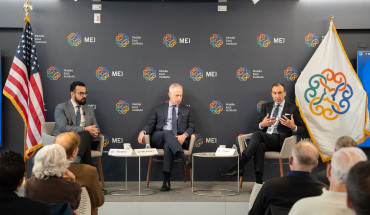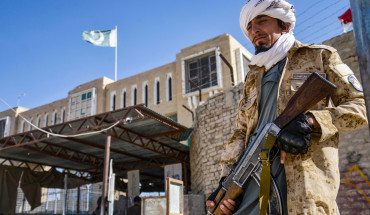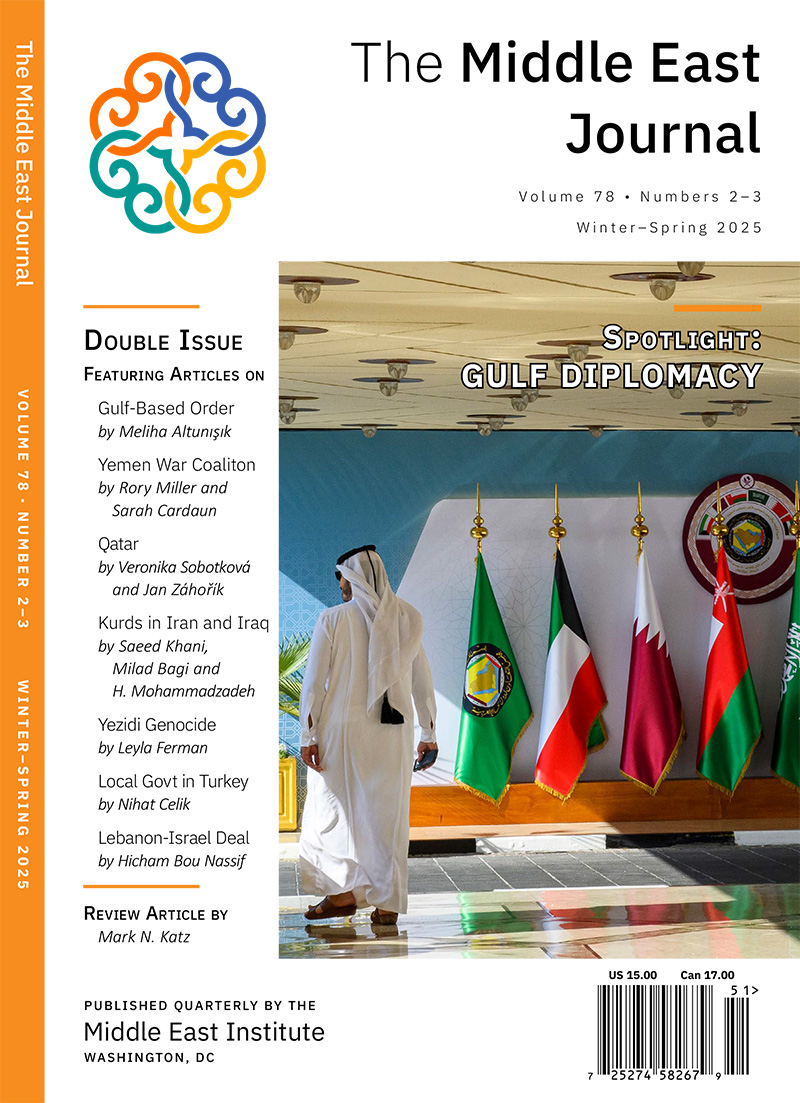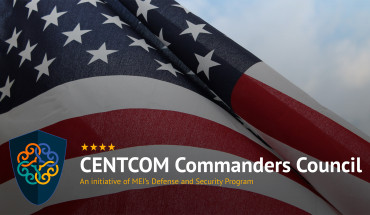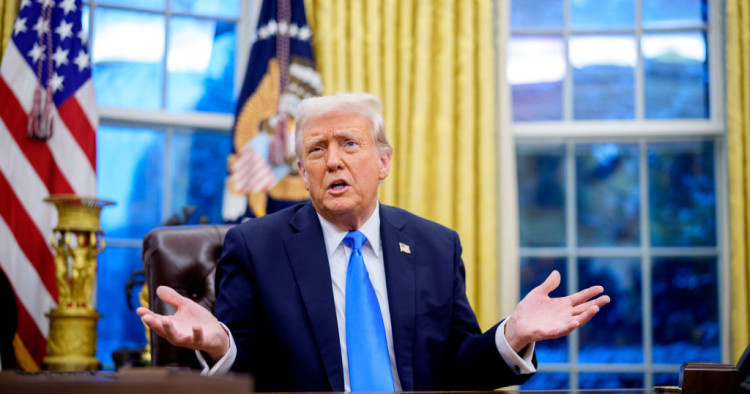The Trump administration’s Middle East approach in its first three weeks back in office was filled with plenty of sound and fury. It’s still too soon to tell whether all of the noise signifies much of anything for the region, yet there are few promising signs of a smooth ride ahead.
President Donald Trump’s opening days included a series of dramatic moves on multiple fronts, domestic and international, aimed at knocking adversaries and opponents off balance in a strategy designed to force others to react and think incoherently, an approach aptly captured by New York Times columnist Ezra Klein.
The media spotlight on Trump’s Middle East approach was right where he wanted it to be: fixated on his attention-grabbing statements that America would take over Gaza and all of the Palestinians living there would be kicked out. Like Pavlov’s dogs responding to the sound of a bell, the political media industrial complex mostly took the bait. All of this theater played out against the backdrop of an uncertain Middle East with tenuous cease-fires on Israel’s borders and big questions about recent changes in Syria and Lebanon.
This assessment of Trump 2.0’s Middle East approach focuses on four real-world issues and US policy moves: the cease-fires in Gaza and Lebanon, the looming strategic challenge of Iran, the moves Trump is making on America’s own national security institutions, as well as his administration’s new style of unilateral economic nationalism. All these factors are likely to shape the environment in the weeks and months ahead, amid pushes and pulls from the inevitable surprises that quite often emerge in this part of the world.
1. Ending wars: Fragile cease-fires between Israel and Hamas and Hezbollah
Trump entered office a few days after a cease-fire and hostage-release deal between Israel and Hamas was reached, and two months after the Biden administration helped secure a cease-fire in Lebanon between Hezbollah and Israel.
The implementation of both deals remains incomplete, with tensions rising once again between Hamas and Israel as both sides allege infractions and delays. Trump said he would urge Israel to end the cease-fire this coming Saturday if Hamas delays the release of hostages, saying, “all hell is going to break out.” The United States continues to work behind the scenes with Egypt and Qatar on this front to help advance the implementation of this complex three-phase deal. Hamas has indicated that it would release hostages according to the deal, but it is important to watch this space for developments, because a breakdown would undercut regional security and upend Trump’s agenda. On the Lebanon front, the Trump team has remained active, sending Deputy Special Envoy Morgan Ortagus to Beirut in ongoing efforts to nudge the parties to that agreement to adhere to the cease-fire and avoid a return to conflict.
This challenging work of ongoing diplomacy combined with necessary security support to key partners underscores the important organizing and support roles America plays in such initiatives. The media frenzy and extreme attention to Trump’s incendiary and unrealistic statements — most recently, that the United States will take over Gaza — at best serve as a distraction from the important work being done; at worst, they send the wrong sort of signals about practical and realistic end states for this particular conflict. Trump’s Gaza statements were swiftly rejected by the very partners the United States and Israel will need to play leading roles in developing the actual post-war game plan.
2. Iran: No clear strategic direction just yet
Just before meeting with Israeli Prime Minister Benjamin Netanyahu earlier this month, Trump signed a national security presidential memorandum, NSPM-2, aimed at sending the message that the US president was returning to his first term's “maximum pressure” rhetoric and approach. This memorandum, however, doesn’t represent a change in policy as there are no new sanctions or other restrictions like export controls on Iran. Rather, it directs US national security institutions to use existing authorities and more strictly enforce measures aimed at making the regime in Iran feel more economic pressure.
At the same time, Trump continued to telegraph that he remains interested in making a deal with Iran and that he would be open to diplomacy that seeks to resolve the outstanding questions on Iran’s nuclear program and other issues. It is too soon to discern any clear direction yet in Trump’s possible Iran strategy. One key factor that will remain relevant is how Iran relates to its neighbors and the wider Middle East. Therefore, the Trump administration should look for pathways to closely coordinate with key Middle East partners in addressing these issues, as this recent Middle East Institute report argues. In addition to the important nuclear issue, Iran’s role across the region in places like Iraq and Yemen remains a key concern for America and its Middle East partners alike.
3. Unilateral disarmament: Trump’s aid freeze and moves against America’s own national security institutions
A third factor already impacting America’s ability to shape and influence events are the moves Trump has made to freeze foreign aid, eliminate the US Agency for International Development (USAID), and possible future moves by the Department of Government Efficiency (DOGE) on the State Department, Pentagon, intelligence agencies, and Commerce Department. The legal and political battles inside of America over these aggressive moves have only just begun, but the impact on the country’s ability to project power and influence developments in the Middle East has already been felt.
The aid freeze sowed confusion among contractors working at the detention camps in northeast Syria that hold many Islamic State members, even as the Trump administration tried to clarify and issue some exemptions from its initial freeze. In places like the Gaza Strip, where a surge of humanitarian aid was part of the fragile cease-fire, aid organizations have raised alarms that these moves are hurting the ability to deliver much-needed assistance.
More broadly, the rapid dismantling of USAID, a key force multiplier in America’s engagement in the Middle East, is just the first in a series of additional steps the Trump administration may take to unilaterally disarm America’s ability to advance stability and prosperity in the Middle East.
4. Unilateral economic nationalism: Tariffs and trade wars could have spillover effects in the Middle East
On a trip to Oman and Abu Dhabi in late January and early February, I heard directly from local officials and analysts who were closely watching the Trump administration’s developing economic policies such as tariffs against US allies like Canada and targeting partners in other regions of the world such as Asia. The main reaction was that the United States was sending a much different signal about its future role in the global economy and that this could lead countries in the Middle East to seek ways to reorder their economic and trade relationships over time.
This week, Trump introduced steel tariffs, and the countries most directly affected include Canada, Mexico, and Brazil, even though the overall aim seems to be to hit China, the largest producer of steel in the world. Several Middle East countries like Bahrain, the United Arab Emirates, Qatar, Saudi Arabia, and Oman could also be harmed by these particular tariffs, but the impact may be limited, some analysts say.
Nonetheless, these opening salvos on global economic policy, combined with some signals Trump has sent on energy policy, were top of mind in my discussions in the Middle East, where many countries seek to change their economic models and become more integrated with the global and regional economies.
The distraction is the point
The center of gravity in Trump’s early weeks in office remains strongly focused on issues closer to home, with each day producing a new drama designed to disrupt existing structures and produce different outcomes. So far, the Middle East has yet rise to anywhere near the top of that wider policy agenda, despite recent visits of leaders from Israel and Jordan and ongoing events in the region. Trump is still trying to assemble his team while also jarring America’s own national security and political system in ways that he hopes will lead to deeper loyalty and a more efficient implementation of his agenda.
As in Trump’s first term, it is wise to expect the unexpected. Just this week, President Trump mentioned that he might meet Russian President Vladimir Putin in Saudi Arabia, which was reportedly involved in the recent release of an American from a Russian prison.
But as we have seen in the regional reactions to his Gaza “plan,” the laws of physics in the Middle East — as well as in US politics — remain very much in place. For every action, there’s an equal and opposite reaction. It remains unclear whether Trump’s Gaza statements will produce anything more than some support in segments of Israel’s internal political spectrum, or if these statements will prompt Arab countries like Egypt to present a clear alternative with other countries, as it has said it would later this month Thus far, Trump’s initial moves have mostly isolated him from the broader reality of today’s Middle East. The biggest issues in play — whether the cease-fires will hold and what to do about Iran — remain the more serious questions of the moment, as America seeks to find its way at home and abroad.
The opening act of Trump’s second term in office raises the question of whether it has gone off the initial script, or whether there was any script at all.
Brian Katulis is a Senior Fellow for US Foreign Policy at MEI.
Photo by Andrew Harnik/Getty Images
The Middle East Institute (MEI) is an independent, non-partisan, non-for-profit, educational organization. It does not engage in advocacy and its scholars’ opinions are their own. MEI welcomes financial donations, but retains sole editorial control over its work and its publications reflect only the authors’ views. For a listing of MEI donors, please click here.






